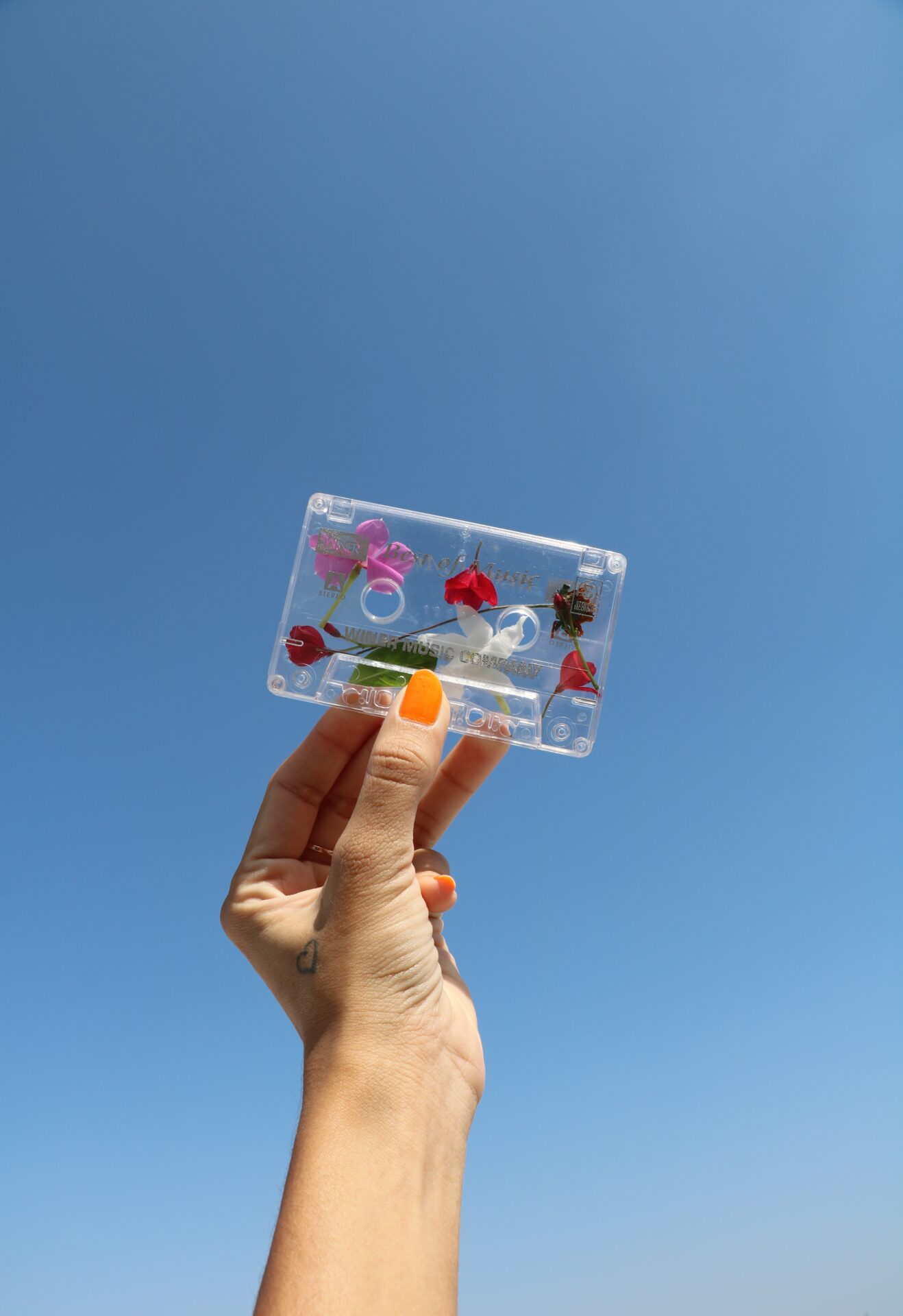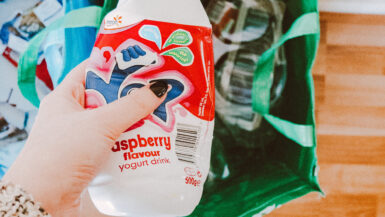In today’s increasingly eco-conscious world, many individuals are striving to reduce their plastic consumption and live a more sustainable lifestyle. However, one common concern is the perceived high cost associated with plastic-free living. In this informative article, we aim to debunk this myth and provide our readers with affordable tips and tricks to achieve a plastic-free lifestyle without breaking the bank. We will delve into various aspects such as sourcing eco-friendly products, making DIY alternatives, and adopting simple daily habits that can lead to significant long-term changes. So, whether you are new to the plastic-free journey or looking for ways to enhance your existing eco-friendly lifestyle, this comprehensive guide is here to help you navigate the path to a more sustainable, budget-friendly way of living.
Affordable Reusable Alternatives to Single-Use Plastic Items
Transitioning to a plastic-free lifestyle doesn’t have to be expensive. In fact, by investing in reusable alternatives, you’ll not only be contributing to a healthier planet, but also saving money in the long run. This section will outline some budget-friendly alternatives to common single-use plastic items that you can easily incorporate into your daily routine.
Reusable Grocery Bags and Produce Bags
One of the simplest changes you can make is to switch from disposable plastic bags to reusable grocery bags. These can be found in a variety of materials such as cotton, jute, or even recycled PET plastic. You can often find these bags at affordable prices, and they’re easily washable and durable. Additionally, consider using reusable produce bags made from mesh or cloth to replace the plastic bags used for fruits and vegetables.
Refillable Water Bottles and Coffee Cups
Investing in a reusable water bottle and coffee cup not only helps to reduce plastic waste but can also save you money. Many coffee shops offer discounts for customers who bring their own cups, and you’ll avoid purchasing plastic water bottles when you have your own refillable option. There are plenty of affordable stainless steel, glass, or BPA-free plastic bottles available on the market.
Silicone Food Storage Bags and Beeswax Wraps
Replace single-use plastic bags and cling film with reusable silicone food storage bags and beeswax wraps. These options are not only eco-friendly but also more cost-effective in the long run. Silicone bags are dishwasher-safe and can be used for various purposes, such as storing food or even as a toiletry bag for travel. Beeswax wraps can be used to cover bowls or wrap up leftover food and can be refreshed with a quick wash in cool water.
Reusable Cutlery and Straws
Carrying a set of reusable cutlery and a metal or silicone straw can significantly reduce your plastic waste from disposable utensils and straws. These items are easy to clean and can be found at budget-friendly prices. Keep a set in your bag or car to ensure you always have them on hand when needed.
By adopting these affordable reusable alternatives to single-use plastic items, you’ll not only contribute to a healthier environment but also save money over time. These small changes can make a significant difference in your plastic-free journey and help you achieve a more sustainable lifestyle without sacrificing your budget.
Budget-Friendly Plastic-Free Grocery Shopping Tips
Grocery shopping can be a major source of plastic waste, but it doesn’t have to be. With a little planning and some smart shopping strategies, you can reduce your plastic footprint without spending a fortune. In this section, we will explore various ways to make your grocery shopping experience both budget-friendly and plastic-free, without compromising on convenience or quality.
Shop at Bulk Stores or Farmers’ Markets
One way to minimize plastic packaging is by shopping at bulk stores or farmers’ markets. These places often sell items such as grains, nuts, seeds, and even household products in large quantities, allowing you to bring your own reusable containers and bags to fill up. This not only helps reduce plastic waste but can also save you money, as you’re usually charged by weight and not paying for the cost of packaging. Similarly, farmers’ markets offer fresh, locally-grown produce, often without the plastic packaging found in supermarkets. Plus, you’ll be supporting local farmers and reducing the environmental impact of transportation.
Plan Your Meals and Make a Shopping List
Before heading to the store, take some time to plan your meals for the week and create a shopping list. This will not only help you avoid impulse purchases and save money but also minimize food waste and the need for plastic packaging. By knowing exactly what you need, you can also focus on purchasing items with less or no plastic packaging, making your shopping trip more eco-friendly.
Choose Loose Produce Over Pre-Packaged Options
When shopping for fruits and vegetables, opt for loose produce instead of pre-packaged options. Not only will this help reduce plastic waste, but it can also save you money since you’re only paying for the produce itself and not the packaging. Use reusable produce bags or simply place the items directly into your shopping cart or basket.
Opt for Glass, Metal, or Paper Packaging
When faced with a choice between plastic packaging or alternatives such as glass, metal, or paper, choose the latter whenever possible. These materials are generally more eco-friendly, and in many cases, can be reused or recycled. While the initial cost may be slightly higher, they often last longer and can save you money in the long run.
Bring Your Own Containers for Deli Items
If you regularly purchase items from the deli counter, such as meats, cheeses, or prepared foods, consider bringing your own reusable containers. Many stores are happy to accommodate this request, and it’s an easy way to reduce plastic waste from disposable containers and plastic wrap.
By implementing these budget-friendly, plastic-free grocery shopping tips, you can make a positive impact on the environment while saving money. Simple changes in your shopping habits can lead to a more sustainable and budget-conscious lifestyle, demonstrating that living plastic-free does not have to be expensive or inconvenient.
DIY Eco-Friendly Household Cleaning Solutions
One of the most effective ways to reduce plastic waste and save money is by making your own eco-friendly cleaning solutions. Not only do these homemade alternatives eliminate the need for single-use plastic containers, but they also provide a non-toxic, environmentally friendly option for keeping your home clean and fresh. In this section, we will explore a variety of easy-to-make, budget-friendly cleaning solutions that can be used throughout your home. These DIY recipes utilize common household ingredients, making them an accessible and affordable option for anyone looking to embrace plastic-free living.
Multi-Purpose Cleaner
A simple yet effective multi-purpose cleaner can be made using white vinegar, water, and a few drops of essential oil for a pleasant scent. Mix equal parts vinegar and water in a reusable spray bottle, add your desired essential oil (such as lemon, lavender, or tea tree), and shake well before use. This mixture can be used to clean countertops, glass, and many other surfaces around the home.
Scrubbing Powder
For a natural, non-toxic alternative to commercial scrubbing powders, combine equal parts baking soda and salt. This mixture works well for scrubbing sinks, bathtubs, and other surfaces that require a bit more elbow grease. Simply sprinkle the mixture onto the surface, scrub with a damp cloth or sponge, and rinse with water.
Floor Cleaner
To create an eco-friendly floor cleaner, combine 1/2 cup of white vinegar with a gallon of warm water in a bucket. Optionally, add a few drops of essential oil for a pleasant scent. Use a mop or cloth to clean your floors, and then allow them to air dry. This solution works well on most floor types, including hardwood, tile, and laminate.
Toilet Bowl Cleaner
For an inexpensive and environmentally friendly toilet bowl cleaner, mix 1/2 cup of baking soda with 1/4 cup of white vinegar in a reusable squirt bottle. Add a few drops of tea tree or lavender essential oil for their natural antibacterial properties. Squirt the mixture into the toilet bowl, scrub with a toilet brush, and then flush to rinse.
Window and Glass Cleaner
Combine equal parts white vinegar and water in a reusable spray bottle to create an effective window and glass cleaner. Optionally, add a few drops of lemon essential oil for a streak-free shine and a refreshing scent. Spray the solution onto the glass, and then wipe clean with a microfiber cloth or old newspaper.
By creating your own DIY eco-friendly household cleaning solutions, you not only reduce plastic waste but also save money and promote a healthier living environment. These simple recipes utilize readily available ingredients, making it easy for anyone to embrace a plastic-free lifestyle while staying on budget. Give these homemade cleaners a try and experience the benefits of a greener, cleaner home.
Inexpensive Ways to Reduce Plastic Waste in the Kitchen
The kitchen is often the epicenter of plastic waste in our homes, from food packaging to disposable utensils and containers. Thankfully, there are many affordable and practical ways to reduce plastic waste in the kitchen without compromising on convenience or functionality. In this section, we will explore a variety of budget-friendly solutions and habits that can help you significantly reduce your plastic footprint in the kitchen and encourage a more sustainable lifestyle.
Store Food in Reusable Containers and Wraps
Instead of using plastic wrap or single-use plastic bags for storing leftovers, opt for reusable alternatives like glass or stainless steel containers, silicone food storage bags, or beeswax wraps. These options are not only eco-friendly, but they can save you money in the long run as they are durable and long-lasting.
Invest in a Quality Set of Reusable Food Storage Containers
Purchasing a quality set of reusable food storage containers made from glass, stainless steel, or BPA-free plastic is a simple way to reduce plastic waste. These containers can be used for storing leftovers, packing lunches, or even freezing food. While the initial investment may be slightly higher, their durability and longevity will save you money over time.
Switch to Reusable Dish Sponges and Cloths
Disposable dish sponges and scrubbers often contain plastic and can contribute to microplastic pollution. Consider switching to reusable dish sponges, scrub brushes, or dishcloths made from natural materials such as bamboo, sisal, or cotton. These options are not only better for the environment but can be more cost-effective as they can be washed and reused multiple times.
Buy in Bulk and Use Reusable Containers
Whenever possible, purchase pantry staples like grains, pasta, and spices in bulk and store them in reusable glass jars or containers. This not only helps to reduce plastic packaging waste but can also save you money, as you’re typically charged by weight when buying in bulk.
Make Your Own Plant-Based Milk
Store-bought plant-based milk often comes in single-use plastic-lined cartons. To reduce plastic waste and save money, try making your own plant-based milk at home using a blender and a reusable nut milk bag. Homemade almond, cashew, or oat milk can be easily made with just a few ingredients, and the taste is often superior to store-bought alternatives.
Grow Your Own Herbs and Salad Greens
To avoid the plastic packaging associated with store-bought herbs and salad greens, consider growing your own at home. Even if you don’t have a garden, many herbs and greens can be easily grown in pots or containers on a windowsill or balcony. This not only reduces plastic waste but can also save you money and provide fresher, more flavorful ingredients for your meals.
By adopting these affordable and practical solutions, you can make significant strides towards reducing plastic waste in your kitchen. Each small change you make contributes to a more sustainable and eco-friendly lifestyle, proving that living plastic-free does not have to be expensive or inconvenient. With a few simple adjustments, you can enjoy a cleaner, greener kitchen while staying on budget.
Thrift Shopping and Upcycling for a Sustainable Lifestyle
Embracing a plastic-free lifestyle doesn’t stop with reducing single-use plastics and making eco-friendly swaps in your home. Thrift shopping and upcycling are two additional ways to build a sustainable lifestyle that is both budget-friendly and environmentally conscious. In this section, we will explore the benefits of thrift shopping and upcycling, as well as provide practical tips on how to incorporate these practices into your daily life.
Benefits of Thrift Shopping
Thrift shopping is an excellent way to reduce your environmental impact while saving money. By purchasing second-hand items, you’re not only contributing to the circular economy but also reducing the demand for new products and their associated plastic packaging. Additionally, thrift shopping often supports local charities or nonprofits, allowing you to give back to your community while shopping sustainably.
How to Thrift Shop Effectively
To make the most of your thrift shopping experience, consider the following tips:
1. Make a list of items you need to avoid impulse purchases and stay focused on finding eco-friendly alternatives to plastic products.
2. Visit multiple thrift stores or second-hand shops to increase your chances of finding what you’re looking for.
3. Be patient and persistent, as it may take some time to find the perfect item.
4. Inspect items carefully before purchasing to ensure they are in good condition and will last for years to come.
5. Don’t be afraid to negotiate prices, especially if you’re buying multiple items or if an item is slightly damaged.
Upcycling for a Greener Home
Upcycling is the process of transforming old or discarded items into something new and functional. Not only does upcycling reduce waste, but it can also save you money and add a unique, personal touch to your home.
Easy Upcycling Projects to Get Started
Here are some simple upcycling ideas to help you begin your journey towards a more sustainable and plastic-free lifestyle:
1. Transform glass jars or bottles into reusable containers for storing food or household items.
2. Turn an old t-shirt or towel into reusable cleaning cloths or dish rags.
3. Create unique planters from repurposed containers, such as old boots, teapots, or tin cans.
4. Refashion outdated clothing into stylish new garments or accessories.
5. Convert wooden pallets or crates into functional furniture or storage solutions.
By integrating thrift shopping and upcycling into your plastic-free lifestyle, you can save money, reduce waste, and contribute to a more sustainable future. These practices allow you to make the most of existing resources while minimizing your environmental impact, proving that living plastic-free on a budget is not only possible but also rewarding and enjoyable.





Leave a reply